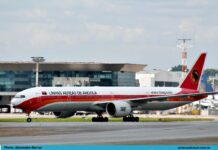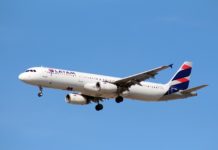
The air passenger traffic growth in the largest Latin American country Brazil is being driven by the strong economic growth and the rapidly expanding middle class. Brazil is currently one of the most stable and prosperous countries in Latin America which demonstrated an impressive $2.47 trillion GDP in 2011. The country’s economy is anticipated to reach $3.17 trillion by 2017. Its top 13 airports (from 165) for domestic services in Brazil account for 60-73 percent of the overall domestic air traffic. This August the country’s three major carriers – Avianca Brazil, Azul and TRIP announced a significant capacity growth compared to the results recorded at the same time last year. As the regional economies continue to grow, Brazil presents opportunities for the aviation industry in general.
As the total volume of air traffic is expected to double over the next decade, Boeing experts estimate that the existing fleet is expected to grow by 5.1 percent annually to comprise 3,450 airplanes, including 2,510 new deliveries valued at $260 billion. Most of the newly delivered aircraft will be single-aisle models, spurred by intense regional traffic growth. Currently, the Brazilian aerospace industry is dominated by Embraer and its suppliers.
‘Due to the country’s size air transportation is a crucial link in the infrastructure of Brazil. Over the last decade the Brazilian fleet structure has shifted to focus on more efficient turbo-props such as ATRs due to the increasing fuel costs as a result of the upward trend in global oil prices. Brazil’s passenger growth has jumped by 39 percent over the past 5 years with the economy expected to double over the upcoming decade,’ says Zilvinas Sadauskas, the CEO of Locatory.com.
There are about 60 various types of MRO organizations and 64 companies involved in the aircraft parts and components’ business in Brazil. Experts observe that on average 37% of all new aircraft ordered by the Brazilian carriers will be ‘home-grown’ with Boeing taking the next substantial share of the orders. By the end of 2020, Brazil’s domicile fleet is forecast to have 243 Embraer aircraft, 213 Boeing and 126 Airbus aircraft. On the other hand, Embraer, the local aircraft manufacturer, is the major buyer of aviation equipment and aircraft parts for its own production line, as well as one of the largest international suppliers for the aviation market.
‘Brazil is one of the BRIC countries together with Russia, India and China, with its growth far outpacing the U.S. and Europe. As the country’s aviation market is developing, imports of parts and components for defence, commercial and executive aircraft will continue to increase, representing good business opportunities for foreign suppliers, especially when Brazil prepares its infrastructure for the Football World Cup in 2014 and the Olympic Games in 2016. So maybe the upcoming major international sports events will become that stimulus which will help the Brazilian aviation industry to become one of the best in the world?’ told Z.Sadauskas.





